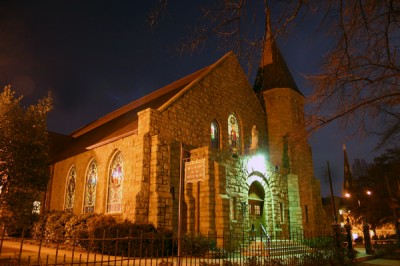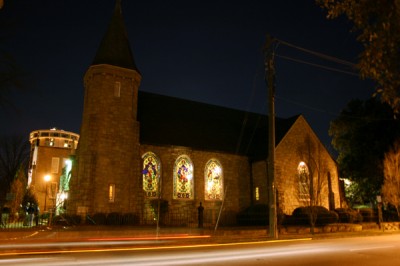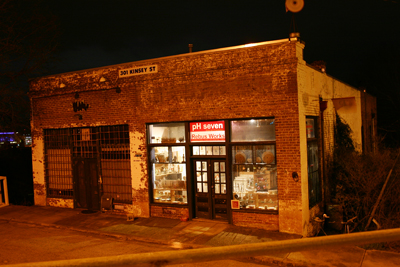
Regardless of your religious beliefs, you probably know that our city is home to many beautiful churches. These range from the historic gothic revival Christ Church (1853) on Capitol Square to the textbook modernist sanctuary of Holy Trinity Lutheran Church (1959) on Clark Ave. And there’s everything else in between.
But one thing you probably don’t know is that Raleigh is also home to the smallest Roman Catholic Cathedral in the (48 contiguous) United States. Sacred Heart Cathedral is situated downtown on Hillsboro St. at the corner of McDowell. The irony is that its status was never intended to be.

There had been an organized Catholic presence in Raleigh since the 1820s, and a visiting priest ministered to the city’s tiny congregation until 1839. Sometime prior to 1860, a small, former Baptist church building on Capitol Square was secured for services.
Raleigh’s Catholic population grew following the Civil War, and the inadequate space and poor condition of the building soon became an issue. For a time in the 1870s Mass was held in a meeting hall in the Briggs Hardware building on Fayetteville St.
Then, in 1879, Fr. James White purchased the former Brian Grimes homeplace (aka the Pulaski Cowper mansion) on Hillsboro St., and the parish of Sacred Heart Church was established. He expanded the mansion so that it could be better utilized as both as a church and rectory.

Long-time pastor Fr. Griffin is buried on the grounds of the Cathedral. His gravesite is shown above.
In 1899 Fr. Thomas Griffin was appointed pastor, a position he held for 31 years. During his tenure a parochial school was established in 1909, and the church campus was later expanded with the addition of a rectory and convent. In 1922 the cornerstone of Sacred Heart Church was laid, and the French Gothic Revival stone building was dedicated in October of 1924.
Read more »







 Sign up for the Newsletter
Sign up for the Newsletter